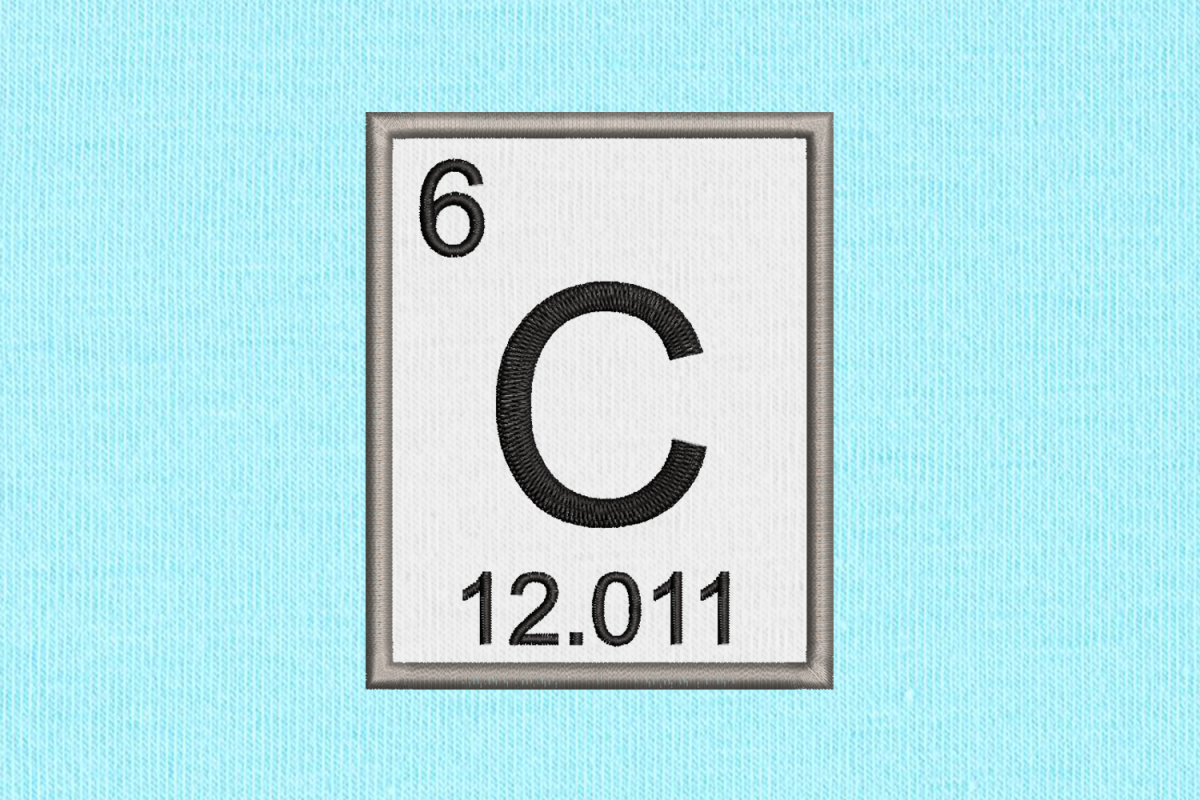
In most of these cases, light nuclei have had to smash together with enough energy to allow the strong force - a glue-like bond that forms when protons and neutrons get close enough to touch - to overcome the electromagnetic force – which pushes protons apart.
#Carbon element square series
Most naturally existing isotopes are the final (stable or long-lived) product resulting from a long series of nuclear reactions and decays. Others result from processes that happen within stars or as a result of chance collisions between highly energetic nuclei - known as cosmic rays - within our atmosphere. Some of the lighter isotopes were formed very early in the history of the universe, during the Big Bang.

As it turns out, this question is a complex one, but lends some truth to the adage that we are all made of star dust. From the bellies of starsīy now, you may be wondering how all these isotopes were created in the first place. This is one of the reasons why some isotopes of a given element are radioactive, while others are not. The same is true if a nucleus has too many protons. If a nucleus has too many neutrons (the definition of “too many” depends on how heavy the nucleus is), there is a chance that it will decay towards stability. One of the most important is the ratio of protons to neutrons a particular nucleus has. There are many factors that can cause a nucleus to decay. But some isotopes have the ability to circumvent this rule by transforming into another element entirely.Ī carbon-14 neutron turns into a proton during beta decay. So different isotopes of the same element are identical, chemically speaking. This means that all three isotopes have different atomic masses (carbon-14 being the heaviest), but share the same atomic number (Z=6).Ĭhemically, all three are indistinguishable, because the number of electrons in each of these three isotopes is the same. All three have six protons, but their neutron numbers - 6, 7, and 8, respectively - all differ. There are three isotopes of carbon found in nature – carbon-12, carbon-13, and carbon-14. Isotopes of an element share the same number of protons but have different numbers of neutrons. National Nuclear Data Center / Wikimedia Commons Elements are assigned a row on the chart according to the number of protons they have. The boundaries of this map are constantly spreading, as new research helps us find ways to make new isotopes. Since sodium has 11 protons, the number of neutrons must be 23 – 11 = 12 neutrons.The Map of Nuclides contains information about all known isotopes. The mass number of an element tells us the number of protons AND neutrons in an atom (the two particles that have a measurable mass). This tells us that sodium has 11 protons and because it is neutral it has 11 electrons. We know that the atomic number of sodium is 11. The mass number is given at the top left of the elements symbol, for example, sodium has a mass number of 23. This is why elements in the same group of the Periodic Table have similar properties. It is the number of outer electrons that give an element its chemical properties. The second energy level is also full, holding eight electrons and one electron remaining in the outer energy level. The first two fill the innermost energy level. The first energy level (the one nearest the nucleus) can hold a maximum of two electrons with the others being able to hold up to a maximum of 8 electrons (only true for the first 20 elements).Ī sodium atom contains 11 electrons orbiting a nucleus in 3 levels, 2 in the lowest, then 8, then 1 These energy levels can only hold a certain number of electrons. All the electrons are arranged into energy levels. The electron arrangement of all atoms can be found in the data booklet. Since atoms are neutral, we know then that sodium atoms must also have 11 negative electrons to cancel the charge from 11 positive protons. This is written at the bottom left hand side of the symbol.

The atomic number of an element tells you how many protons that the element has.


 0 kommentar(er)
0 kommentar(er)
